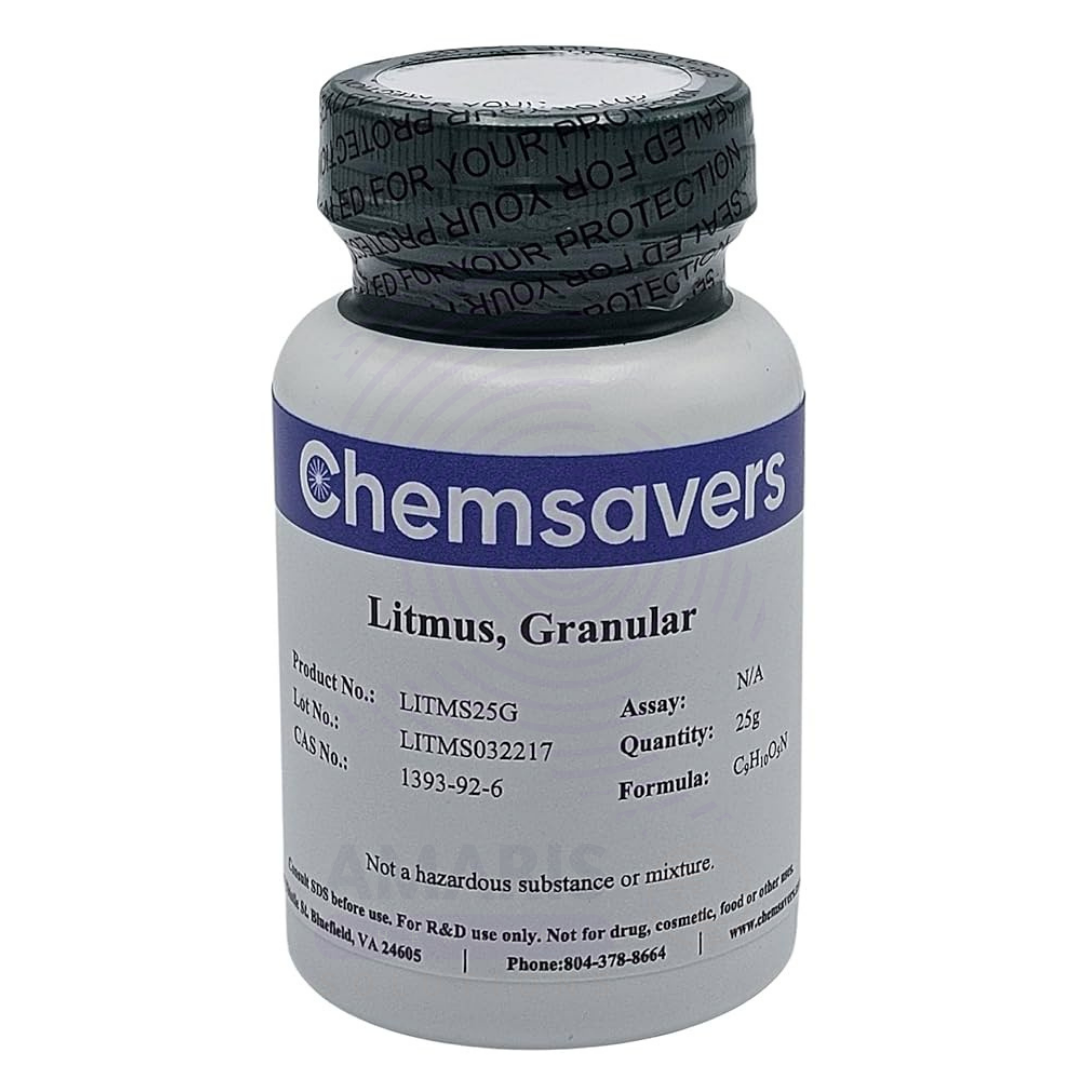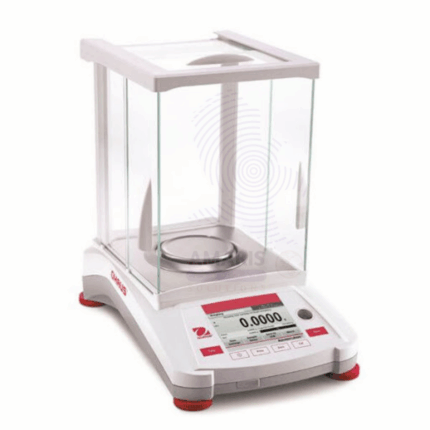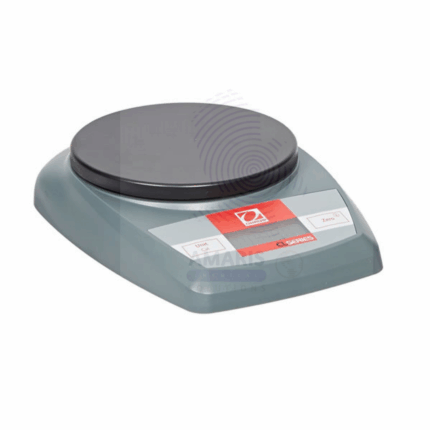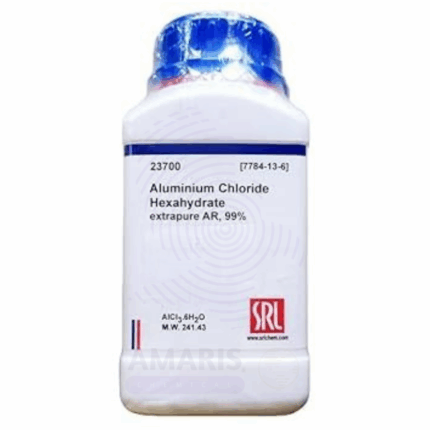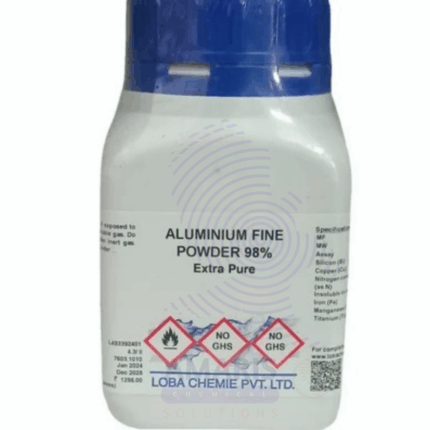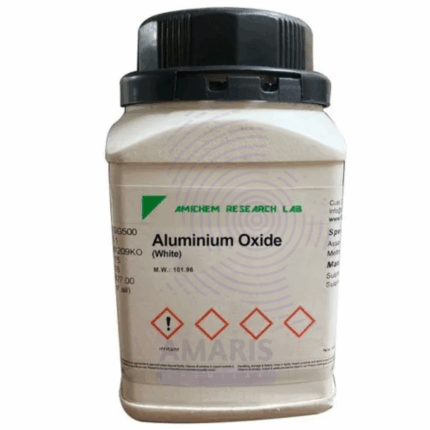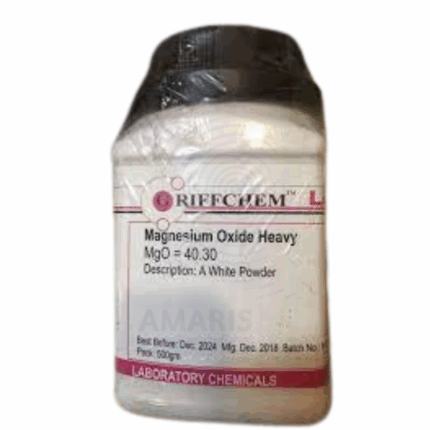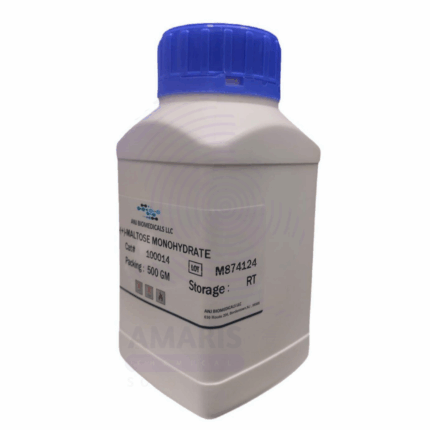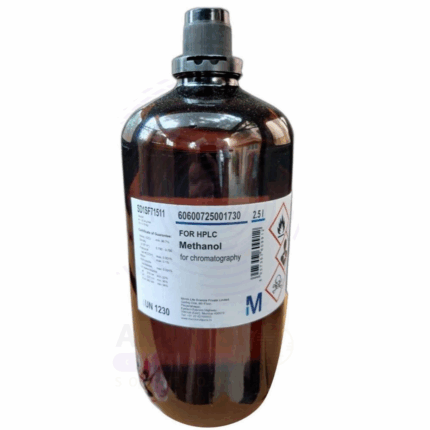Litmus Granular Extra Pure
$ 17.80 Original price was: $ 17.80.$ 17.67Current price is: $ 17.67.
Litmus Granular Extra Pure is a premium-grade pH indicator widely used in laboratories for acid-base testing and educational demonstrations. Derived from natural sources like lichens, this granular form offers a stable, easy-to-handle format suitable for preparing litmus solutions or impregnating test papers. In acidic environments, it turns red, while in alkaline conditions, it turns blue, providing a clear visual response. Its high purity ensures reliable and repeatable results across various applications in chemistry, biology, and environmental testing. Store in a tightly sealed container away from moisture and direct sunlight to preserve its effectiveness.
Litmus Granular Extra Pure
Primary Uses
- Acid-Base Indicator:
- Primarily used as a pH indicator to distinguish between acidic (red) and alkaline (blue) environments in solution.
- Qualitative pH Testing:
- Common in laboratories for quick identification of pH conditions in various chemical and biological samples.
Secondary Uses
- Educational Demonstrations:
- Widely used in schools and universities for teaching pH concepts and acid-base reactions.
- Buffer Solution Testing:
- Occasionally used to test the efficacy of buffer solutions during formulation and stability studies.
- Environmental Sampling:
- Applied in field kits for soil and water pH testing where precise digital meters are not available.
| PACK SIZE |
25 grams Plastic Tin |
|---|
1. Basic Identification Attributes
- Chemical Name: Litmus Granular
- Synonyms: Litmus reagent, Litmus dye
- Appearance: Granular, dark purple to blue solid
- Odor: Odorless
- Solubility: Soluble in water and alcohol
- Grade: Extra Pure (suitable for analytical and educational use)
2. Safety & Hazard Attributes
- GHS Classification: Not classified as hazardous under normal laboratory use
- Hazard Statements: None under typical concentrations
- Precautionary Statements:
- P280: Wear protective gloves and eye protection during handling
- P262: Avoid contact with eyes and prolonged skin contact
- Personal Protective Equipment (PPE):
- Standard lab coat, gloves, safety goggles
- First Aid Measures:
- Inhalation: Move to fresh air; unlikely hazard in solid form
- Skin Contact: Wash with soap and water
- Eye Contact: Rinse with clean water for several minutes
- Ingestion: Rinse mouth; not considered highly toxic, but seek advice if symptoms appear
- Fire Hazards:
- Not flammable
- Use water spray, dry chemical, or CO₂ for extinguishing surrounding fire
3. Storage & Handling Attributes
- Storage Conditions:
- Store in a tightly sealed container
- Keep in a cool, dry place away from strong oxidizers and moisture
- Avoid excessive exposure to light
- Handling Tips:
- Use in well-ventilated area
- Prevent formation of dust
4. Laboratory Applications
- Primary Uses:
- Acid-base indicator: Changes color depending on pH
- Red in acidic solutions (pH < 4.5)
- Blue in alkaline solutions (pH > 8.3)
- Used in qualitative tests to determine pH conditions of solutions
- Acid-base indicator: Changes color depending on pH
- Secondary Uses:
- Educational demonstrations in chemistry labs
- Manufacture of litmus paper
- Colorimetric experiments for pH mapping or titrations
SAFETY PRECAUTIONS
Personal Protective Equipment (PPE):
- Wear a lab coat, nitrile gloves, and safety goggles.
- Use a dust mask if handling in powder or granular form to avoid inhalation.
Handling:
- Avoid contact with eyes, skin, and clothing.
- Prevent formation of dust.
- Wash hands thoroughly after handling.
Storage:
- Store in a cool, dry, and well-ventilated area.
- Keep the container tightly closed when not in use.
- Protect from moisture and strong acids or alkalis.
FIRST AID MEASURES
Inhalation:
- Move the person to fresh air.
- Seek medical attention if any respiratory discomfort occurs.
Skin Contact:
- Wash thoroughly with soap and water.
- Remove and wash contaminated clothing.
- Seek medical attention if irritation develops.
Eye Contact:
- Rinse cautiously with plenty of water for several minutes.
- Remove contact lenses if present and easy to do.
- Continue rinsing and consult a medical professional if irritation persists.
Ingestion:
- Rinse mouth with water.
- Do not induce vomiting.
- Seek medical attention if symptoms develop.
FIRE FIGHTING MEASURES
Flammability:
- Not classified as flammable, but may burn at high temperatures.
Extinguishing Media:
- Use water spray, dry chemical, foam, or CO₂ as appropriate for surrounding materials.
Hazardous Combustion Products:
- May emit carbon oxides and organic fumes upon decomposition.
Firefighter Protection:
- Use self-contained breathing apparatus (SCBA).
- Wear full protective firefighting gear.


 Preservatives(food)
Preservatives(food) Flavor Enhancers
Flavor Enhancers Acidulants
Acidulants Sweeteners
Sweeteners Antioxidants
Antioxidants Colorants(food)
Colorants(food) Nutraceutical Ingredients (food)
Nutraceutical Ingredients (food) Nutrient Supplements
Nutrient Supplements Emulsifiers
Emulsifiers
 Collectors
Collectors Dust Suppressants
Dust Suppressants Explosives and Blasting Agents
Explosives and Blasting Agents Flocculants and Coagulants
Flocculants and Coagulants Frothers
Frothers Leaching Agents
Leaching Agents pH Modifiers
pH Modifiers Precious Metal Extraction Agents
Precious Metal Extraction Agents
 Antioxidants(plastic)
Antioxidants(plastic) Colorants (Pigments, Dyes)
Colorants (Pigments, Dyes) Fillers and Reinforcements
Fillers and Reinforcements Flame Retardants
Flame Retardants Monomers
Monomers Plasticizers
Plasticizers Polymerization Initiators
Polymerization Initiators Stabilizers (UV, Heat)
Stabilizers (UV, Heat)
 Antifoaming Agents
Antifoaming Agents Chelating Agents
Chelating Agents Coagulants and Flocculants
Coagulants and Flocculants Corrosion Inhibitors
Corrosion Inhibitors Disinfectants and Biocides
Disinfectants and Biocides Oxidizing Agents
Oxidizing Agents pH Adjusters
pH Adjusters Scale Inhibitors( water)
Scale Inhibitors( water)
 Antioxidants(cosmetic)
Antioxidants(cosmetic) Emollients
Emollients Fragrances and Essential Oils
Fragrances and Essential Oils Humectants
Humectants Preservatives
Preservatives Surfactants(cosmetic)
Surfactants(cosmetic) Thickeners
Thickeners UV Filters
UV Filters
 Fertilizers
Fertilizers Soil Conditioners
Soil Conditioners Plant Growth Regulators
Plant Growth Regulators Animal Feed Additives
Animal Feed Additives Biostimulants
Biostimulants Pesticides (Herbicides, Insecticides, Fungicides)
Pesticides (Herbicides, Insecticides, Fungicides)
 Active Pharmaceutical Ingredients (APIs)
Active Pharmaceutical Ingredients (APIs) Excipients
Excipients Solvents(pharmaceutical)
Solvents(pharmaceutical) Antibiotics
Antibiotics Antiseptics and Disinfectants
Antiseptics and Disinfectants Vaccine Adjuvants
Vaccine Adjuvants Nutraceutical Ingredients (pharmaceutical)
Nutraceutical Ingredients (pharmaceutical) Analgesics & Antipyretics
Analgesics & Antipyretics
 Analytical Reagents
Analytical Reagents Solvents(lab)
Solvents(lab) Chromatography Chemicals
Chromatography Chemicals Spectroscopy Reagents
Spectroscopy Reagents microbiology-and-cell-culture-reagents
microbiology-and-cell-culture-reagents Molecular Biology Reagents
Molecular Biology Reagents Biochemical Reagents
Biochemical Reagents Inorganic and Organic Standards
Inorganic and Organic Standards Laboratory Safety Chemicals
Laboratory Safety Chemicals Specialty Laboratory Chemicals(Special Laboratory Equipment)
Specialty Laboratory Chemicals(Special Laboratory Equipment)
 Demulsifiers
Demulsifiers Hydraulic Fracturing Fluids
Hydraulic Fracturing Fluids Scale Inhibitors(oil)
Scale Inhibitors(oil) Surfactants(oil)
Surfactants(oil) Drilling Fluids
Drilling Fluids
 Dyes and Pigments
Dyes and Pigments Bleaching Agents
Bleaching Agents Softening Agents
Softening Agents Finishing Agents
Finishing Agents Antistatic Agents
Antistatic Agents
 Admixtures
Admixtures Waterproofing Agents
Waterproofing Agents Sealants and Adhesives
Sealants and Adhesives Curing Compounds
Curing Compounds Concrete Repair Chemicals
Concrete Repair Chemicals Anti-Corrosion Coatings
Anti-Corrosion Coatings
 Surfactants(cleaning)
Surfactants(cleaning) Builders
Builders Enzymes
Enzymes Solvents (Cleaning)
Solvents (Cleaning) Fragrances
Fragrances
 Electronic Chemicals
Electronic Chemicals Catalysts
Catalysts Lubricants
Lubricants Photographic Chemicals
Photographic Chemicals Refrigerants
Refrigerants Automotive chemicals
Automotive chemicals Pyrotechnic Chemicals
Pyrotechnic Chemicals
 Biodegradable Surfactants
Biodegradable Surfactants Bio-based Solvents
Bio-based Solvents Renewable Polymers
Renewable Polymers Carbon Capture Chemicals
Carbon Capture Chemicals Wastewater Treatment Chemicals
Wastewater Treatment Chemicals
 Pigments
Pigments Solvents(paint)
Solvents(paint) Specialty Coatings
Specialty Coatings Binders/Resins
Binders/Resins Additives
Additives Driers
Driers Anti-Corrosion Agents
Anti-Corrosion Agents Functional Coatings
Functional Coatings Application-Specific Coatings
Application-Specific Coatings
 Fresh Herbs
Fresh Herbs Ground Spices
Ground Spices Whole Spices
Whole Spices Spice Blends
Spice Blends Dried Herbs
Dried Herbs
 Leavening Agents
Leavening Agents Dough Conditioners
Dough Conditioners Flour Treatments
Flour Treatments Fat Replacers
Fat Replacers Decoratives
Decoratives Preservatives(baking)
Preservatives(baking)
 Plasticizers & Softeners
Plasticizers & Softeners Reinforcing Agents
Reinforcing Agents Adhesion Promoters
Adhesion Promoters Vulcanizing Agents
Vulcanizing Agents Antidegradants
Antidegradants Blowing Agents
Blowing Agents Fillers & Extenders
Fillers & Extenders Accelerators & Retarders
Accelerators & Retarders